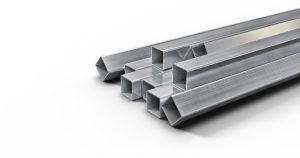
Consisting primarily of iron and carbon, steel is a versatile alloy that’s used in many different industries. It’s strong, durable and corrosion resistant. During production, however, some types of steel undergo additional treatment processes, such as carburizing. Carburized steel contains iron and carbon — just like all other types of steel — but it features different properties. Here’s everything you need to know about carburized steel.
What Is Carburized Steel?
Carburized steel is a type of steel that’s been heat-treated to improve and harden the surface. It involves the addition of carbon into the surface. All types of steel contain carbon, but the specific amount of carbon and where it’s located may vary. Carburized steel, for instance, contains a higher amount of carbon in the surface than most other types of steel.
How Steel Is Carburized
Carburization is a multistep process. First, the steel — typically a low-quality carbon — is thoroughly cleaned to remove any dirt, debris or contaminants that could otherwise interfere with the process.
Once cleaned, the steel is heated in a carbon-rich environment to a temperature of roughly 1,600 to 1,800 degrees Fahrenheit. Exposure to heat will force the carbon atoms into the surface of the steel.
The final step in the carburization process is quenching. After allowing the surface of the steel has absorbed the carbon atoms, it’s cooled via quenching. The steel is typically submerged in a bath of oil or water, resulting in a sudden drop in temperature. Quenching locks in the carbon atoms while simultaneously forming a hard and wear-resistant outer layer.
Benefits of Carburized Steel
Carburized steel is very strong. It’s distinguished from other types of steel by its high concentration of carbon in the surface. Carbon, of course, increases the strength of steel. As a result, carburized steel is stronger than many other types of steel.
Even with its strong properties, carburized steel often has a soft and somewhat flexible core. This is because low-carbon steel is typically carburized. During the carburization process, low-carbon steel is heated in a carbon-rich environment. This forced the carbon atoms into the surface, resulting in a super-strong exterior and a flexible core.
Carburized steel is cost-effective. Since carburization is typically performed on low-carbon steel, it often costs less than other types of steel.
In Conclusion
Steel is often heat-treated to improve its properties. Carburization is one of the most common heat-treatment processes for steel. It’s designed to increase the carbon content in the surface of the steel, resulting in a strong exterior and a flexible core.
